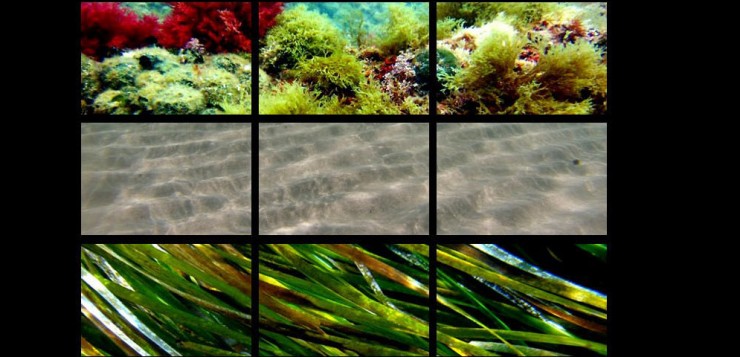Insights into seascape ecology: Landscape patterns as drivers in coastal marine ecosystems, per Aurora M. Ricart (CEAB-CSIC). Seminaris del CEAB. Dijous 18 de maig del 2017.
Habitats commonly occur as interconnected patches constituting spatial heterogeneous mosaics. Ecological patterns and processes, within habitats and among them, are modulated by the spatial structure of the entire mosaic.
Landscape ecology is aimed at understanding how the composition (patch types and sizes) and configuration (how those patches are arranged
spatially) of the habitats in the mosaic influence the functioning of the overall system and its individual components (the patches and the species moving across) at a panoply of spatial scales.
Interactions at the landscape level are usually associated either to the movement of organisms (active mobile entities) or to the transfer of materials (passive mobile entities) from one habitat to another.
Applying landscape ecology, the interactions among and within ecosystems can be identified and evaluated to optimize conservation efforts across broad spatial scales. This approach, although it has been successfully used in terrestrial ecosystems, remains poorly explored in the marine realm, despite coastal landscapes (or
seascapes) present high levels of connectivity and spatial complexity.
Moreover, coastal ecosystems are among the most vulnerable to human action and climate change. As a consequence, the spatial patterning of the coastal seascape is amenable to change. In an attempt to improve general knowledge on seascape ecology, and also to provide new insights useful for management, my research in the last years has focused on the study of the influence of landscape patterns on processes of special importance in the coastal ecosystems.
In this talk I will show several of these works in seascape ecology, emphasizing the importance of landscape-level interactions and processes in driving coastal ecosystems, with a special attention to seagrass fragmented landscapes, and will underline how the relative abundance of habitats and their spatial arrangement influence ecological functions across the coastal ecosystem mosaic.


